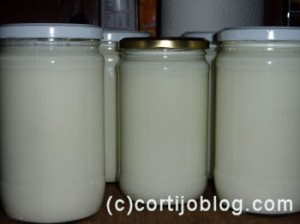 I’ve recently been learning about goats.
I’ve recently been learning about goats.
Goats produce milk as soon as they’ve had a kid and will continue to produce milk as long as the kid is still suckling or they are being milked.
MILKING:
- Goats have to learn to be milked but once they have, they are quite happy to stand and let you get on with it.
- You can either use the knuckle technique (thumb knuckle against the teat and then wrap the other fingers round) or the flat palm technique (press with the thumb and index finger and then wrap the other fingers round)
- It’s easiest to milk both udders at the same time by alternating between them and holding them between the goat’s back legs.
- You need to let the teat fill up and then cut of at the top and squeeze the milk out.
- Goats need to be milked once a day.
PASTEURISATION:
- Goats milk should be pasteurised before you use it. You can either pasteurise it by gently bringing it to the boil and letting it boil up twice before turning the heat off. This method, however, has a negative effect on the cheese so I prefer to gently heat it to 66ºC and keeping it at this temperature for 30 minutes.
- If you pasteurise by boiling it, milk rennet doesn’t seem to work and if you want a harder cheese it’s best to use cider vinegar.

